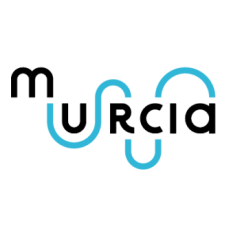
What to see in Mula
Medieval Quarter

In medieval times and on the hillside of “Cerro Cabezo” stood the Islamic Mule: a fortified square with a Muslim fortress where the governors lived.
Today, despite more modern homes, you can discover some of its fascinating medieval elements. Located in the old town of Mula, the medieval quarter not only treasures parts of the wall, the base of a tower, and the remains of the access gates but also picturesque narrow and labyrinthine streets that transport its visitors.
Today, despite more modern homes, you can discover some of its fascinating medieval elements. Located in the old town of Mula, the medieval quarter not only treasures parts of the wall, the base of a tower, and the remains of the access gates but also picturesque narrow and labyrinthine streets that transport its visitors.
Los Fajardo Castle
The Castle of Los Fajardo or Castle of Los Vélez, also known as the Castle of Mula, conquers the view of the city from the top of the hill that protects it. Raised in the 16th century, this monument was sent to be built by the Marquis of Los Vélez, not to defend the town but to ensure the submission of the inhabitants of Mula.
In the castle, there are four distinctive elements: a tower, a central nave with a barrel vault, one attached to the nave and the cistern.
In the castle, there are four distinctive elements: a tower, a central nave with a barrel vault, one attached to the nave and the cistern.
Painted House

Headquarters of the Cristóbal Gabarrón Foundation, it was built in 1770 by the important Blaya family and initially was a palatial house in Mula. Today this house can easily be distinguished by the peculiar paintings in the Baroque-Murcian style on its facade.
Named for the peculiar white graffiti on a red background that decorates it, this building houses an exceptional museum whose main objective is to promote art awareness and knowledge of the culture of the region of Murcia.
Named for the peculiar white graffiti on a red background that decorates it, this building houses an exceptional museum whose main objective is to promote art awareness and knowledge of the culture of the region of Murcia.
Castle of Alcala
Known as the Castle of La Puebla de Mula, this is located near the town of La Puebla and about 120 meters above the plains. This imposing fortress dominates the landscape.
The castle of Islamic origins dates from the 7th century and was built to control the old enclave of Mula.
Its strategic location and important defensive structure also allowed it to play a leading role during the incorporation of the Kingdom of Murcia to the Crown of Castile.
The castle of Islamic origins dates from the 7th century and was built to control the old enclave of Mula.
Its strategic location and important defensive structure also allowed it to play a leading role during the incorporation of the Kingdom of Murcia to the Crown of Castile.
Convent of Saint Francis
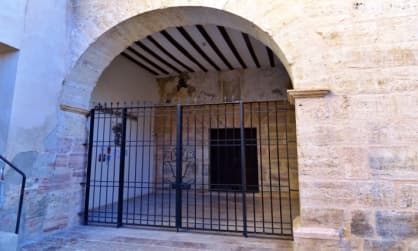
Next to the Church of Our Lady of the Conception and formerly communicated, today its convent can be appreciated.
This is a 16th-century building erected by the Franciscan congregation. Even today you can see its rooms and mainly a brick cloister with arched openings, originally open, that illuminated the galleries.
On the ground floor were the common dining room and its kitchens, with access to a cellar.
This is a 16th-century building erected by the Franciscan congregation. Even today you can see its rooms and mainly a brick cloister with arched openings, originally open, that illuminated the galleries.
On the ground floor were the common dining room and its kitchens, with access to a cellar.
In 2013, the building was successfully restored and is currently home to the City of Mula Museum.
Our Lady of Mount Carmel Hermitage
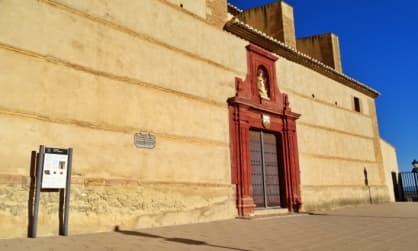
Towards the middle of the 16th century, when the churches of Mula were no longer enough to house so many parishioners, the expansion of the Church of Saint Dominic began.
Surrounded by hamlets and with a narrow possibility of expansion, the other church in Mula, the Church of Saint Michael, did not offer a viable solution. It was then decided to build a new church as well. These two from then on were called Saint Michael “the new” and Saint Michael “the old”.
Surrounded by hamlets and with a narrow possibility of expansion, the other church in Mula, the Church of Saint Michael, did not offer a viable solution. It was then decided to build a new church as well. These two from then on were called Saint Michael “the new” and Saint Michael “the old”.
In the 18th century, this building was remodelled, obtaining the space as we see it today. In this same period, the surrounding farmhouses were demolished to build access to the square of the temple.
Hospital of Immaculate Conception
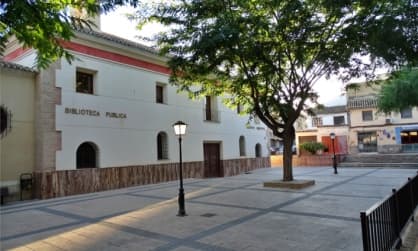
With the arrival of the Franciscans in Mula in 1576, the old Hospital of Saint Peter and the chapel of the Immaculate Conception were enabled, while their monastery was being built on the lands that the Council ceded to them.
In 1585, the Franciscans decided to stay permanently on the premises of the hospital and build a new hospital complex on the land given, in honour of the Immaculate Conception. This is how the current Hospital of Immaculate Conception was born.
In 1585, the Franciscans decided to stay permanently on the premises of the hospital and build a new hospital complex on the land given, in honour of the Immaculate Conception. This is how the current Hospital of Immaculate Conception was born.
Church of Saint Michael the Archangel

Located in the main square, next to the Clock Tower, is this church with a Latin cross plan, an icon of Mula.
Largely destroyed during the Spanish Civil War, its front door was the only item recovered. Originally, the altar had a baroque-style canopy far superior to the one we see today.
This temple houses a painting museum, donated in 1940 by the widow of Pedro Luis Blaza.
Largely destroyed during the Spanish Civil War, its front door was the only item recovered. Originally, the altar had a baroque-style canopy far superior to the one we see today.
This temple houses a painting museum, donated in 1940 by the widow of Pedro Luis Blaza.
Church of Saint Dominic de Guzmán
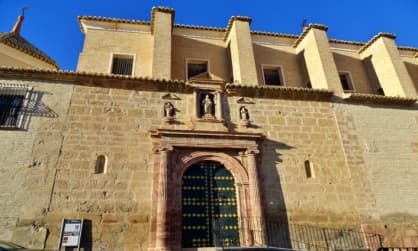
In the upper part of the municipality, this ancient temple dating from the 16th century can be seen. Apparently built on a Muslim mosque that was Christianized, the current building, as we see it, was remodelled on several occasions.
During the festivities of the pilgrimage that commemorates the appearance of the Infant Jesus of Mula to Fray Pedro de Jesús, this temple takes on particular significance. In September, the return of the Infant Jesus of Mula to his sanctuary begins at this site.
During the festivities of the pilgrimage that commemorates the appearance of the Infant Jesus of Mula to Fray Pedro de Jesús, this temple takes on particular significance. In September, the return of the Infant Jesus of Mula to his sanctuary begins at this site.
Royal Monastery of the Incarnation

This is located in the old town of the upper area of Mula. The Royal Monastery of the Incarnation is linked to the appearance of the Infant Jesus of Mula and also plays an important role in the festivities of the pilgrimage in September.
Considered Royal Heritage, the monastery was initially the only conventual foundation in Murcia. The convent was originally composed of two areas divided by the old Camino Real (currently known as the Nuns Street).
Considered Royal Heritage, the monastery was initially the only conventual foundation in Murcia. The convent was originally composed of two areas divided by the old Camino Real (currently known as the Nuns Street).
City of Mula Museum
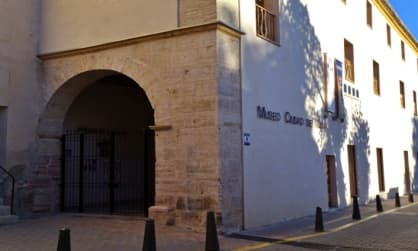
For all visitors who would like to get to know Mula in depth, explore its history and discover its traditions, this exceptional museum, located in the Convent of Saint Francis, offers temporary exhibitions, workshops and guided tours, among other activities.
After crossing the arch of ashlars at its entrance and amid the architectural and historical singularity of the convent, visitors are received with an audio-visual projection on the cultural and tourist heritage of the site. From there, they begin their journey through the rich history of Mula and its region.
After crossing the arch of ashlars at its entrance and amid the architectural and historical singularity of the convent, visitors are received with an audio-visual projection on the cultural and tourist heritage of the site. From there, they begin their journey through the rich history of Mula and its region.
Art Museum of Saint Michael the Archangel
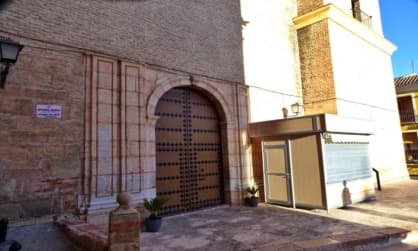
Located on Puerta Mula street and as an annex to the Church of Saint Michael the Archangel is this attractive museum. Situated in the illustrious square of the town hall, the building houses mainly an important collection of paintings donated by the family of Don Pedo Blaya, at the end of the Spanish Civil War.
This is a two-story building attached to the chapel. With works of religious and secular themes, its five rooms offer a significant encounter with art from the 16th to 20th centuries.
This is a two-story building attached to the chapel. With works of religious and secular themes, its five rooms offer a significant encounter with art from the 16th to 20th centuries.
El Cigarralejo Iberian Art Museum
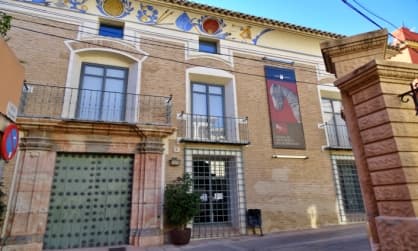
Installed in the Palace of the Marquises of Menahermosa, in the centre of Mula, the “El Cigarralejo” Iberian Art Museum houses important pieces dating from the Iberian period.
In its ten permanent exhibition rooms, the exhibits are dedicated to the Necropolis of El Cigarralejo. All located on the first floor, they exhibit more than eight funerary items in a chronological manner and educational exhibits on the agriculture, economy and art of the time. It also has a temporary exhibition room and other spaces such as a library with more than 400 volumes.
In its ten permanent exhibition rooms, the exhibits are dedicated to the Necropolis of El Cigarralejo. All located on the first floor, they exhibit more than eight funerary items in a chronological manner and educational exhibits on the agriculture, economy and art of the time. It also has a temporary exhibition room and other spaces such as a library with more than 400 volumes.
Mula Town Hall

Since its inception, the Main Square or Town Hall Square has been the central point in the social life of the town of Mula. There, its inhabitants bought handicrafts and agricultural products and gathered to hold protests, celebrate important events or even witness executions.
Among other important events, this site takes on particular importance today during the Night of the Drums, the Saint Isidore the Farmer procession in May, and the September fairs.
Among other important events, this site takes on particular importance today during the Night of the Drums, the Saint Isidore the Farmer procession in May, and the September fairs.
Clock Tower

Located in the town hall square, blue in colour and with a glazed ceramic dome, is this important tower.
Originally erected to house a clock and show the time when the area’s cultivated fields were watered, the Clock Tower has always been essential in the agricultural life of the Mula population.
Although the current tower as we see it was built in 1806, Mula has had a clock for at least five centuries.
Originally erected to house a clock and show the time when the area’s cultivated fields were watered, the Clock Tower has always been essential in the agricultural life of the Mula population.
Although the current tower as we see it was built in 1806, Mula has had a clock for at least five centuries.
Sanctuary of the Infant Jesus of Mula

With a sober and traditional exterior of the churches in the area, the hermitage is a baroque construction, with two bell towers that stand out on a brick facade.
Built in the 13th century, the hermitage has a Latin cross plan with a central nave, two chapels on the sides and a vault. Inside are decorations based on rockeries and plasterwork and Solomonic columns on the altar. In it, the carved figure of the Infant Jesus can be seen. Despite its small size, the hermitage has great heritage value.
Built in the 13th century, the hermitage has a Latin cross plan with a central nave, two chapels on the sides and a vault. Inside are decorations based on rockeries and plasterwork and Solomonic columns on the altar. In it, the carved figure of the Infant Jesus can be seen. Despite its small size, the hermitage has great heritage value.
Milano Shelters
Discovered in the Mula river basin in 1985, this site harbours thousands of years of history. It is one of the most significant sites in the municipality of Mula and is part of the World Heritage. Cave paintings and an impressive burial from the Neolithic era are preserved in the two shelters that make it up.
Shelter I, larger in size, houses paintings along its rocky wall. Shelter II, smaller in size, testifies to a collective burial dating from the Neolithic.
Shelter I, larger in size, houses paintings along its rocky wall. Shelter II, smaller in size, testifies to a collective burial dating from the Neolithic.
El Cigarralejo Site
Located on a hill about 3 kilometres from Mula and over an area of 3,000 square meters, this corner houses an Iberian town, its necropolis and a sanctuary that allow us today to imagine how the first settlers of the peninsular region lived.
Excavations of the site, which began in 1947, took place for almost forty years without interruption. The recovered collection is currently exhibited at the El Cigarralejo Iberian Art Museum.
Excavations of the site, which began in 1947, took place for almost forty years without interruption. The recovered collection is currently exhibited at the El Cigarralejo Iberian Art Museum.
Roman Villa of Los Villaricos
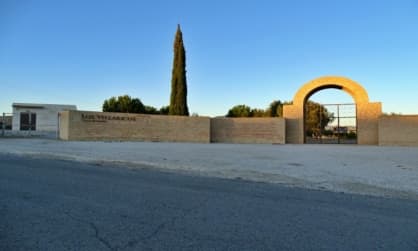
One of the many witnesses to the conquest of the Romans in the Iberian Peninsula, this site houses the town of Los Villaricos, an example of Roman settlements in the rural areas of Mula.
Developed between the 5th and 6th centuries BC, this town was originally a residential space, divided into thermal areas, domestic areas and workspaces such as the production of agricultural products.
Developed between the 5th and 6th centuries BC, this town was originally a residential space, divided into thermal areas, domestic areas and workspaces such as the production of agricultural products.
Caputa Fountain and Rambla Parea
Hidden between the vegetation and its surroundings, about 40 km from the town of Mula, is this place with magnificent natural pools of crystalline waters at different heights.
In this environment of pine forests and vertical limestone walls, a water source, some pools and waterfalls can also be found on the site, ideal for taking a bath or some beautiful photographs.
In this environment of pine forests and vertical limestone walls, a water source, some pools and waterfalls can also be found on the site, ideal for taking a bath or some beautiful photographs.
What to see in the Rio Mula region














